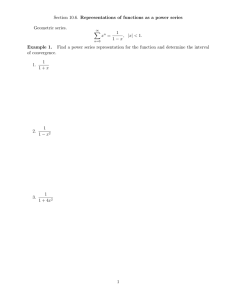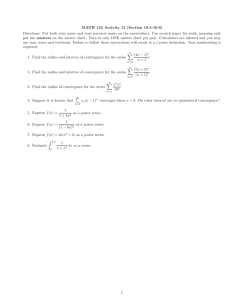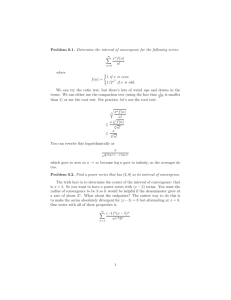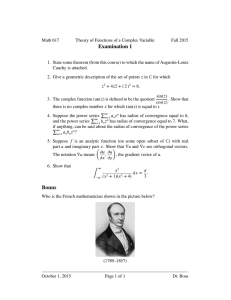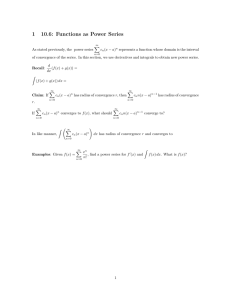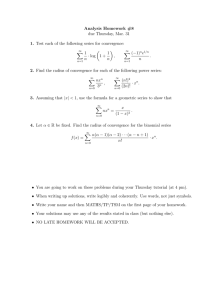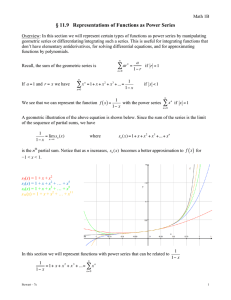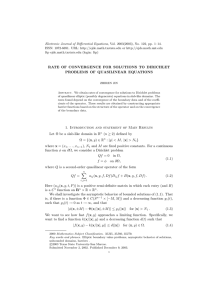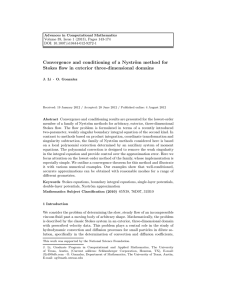Representations of functions as a power series Geometric series. ∑ 1
advertisement
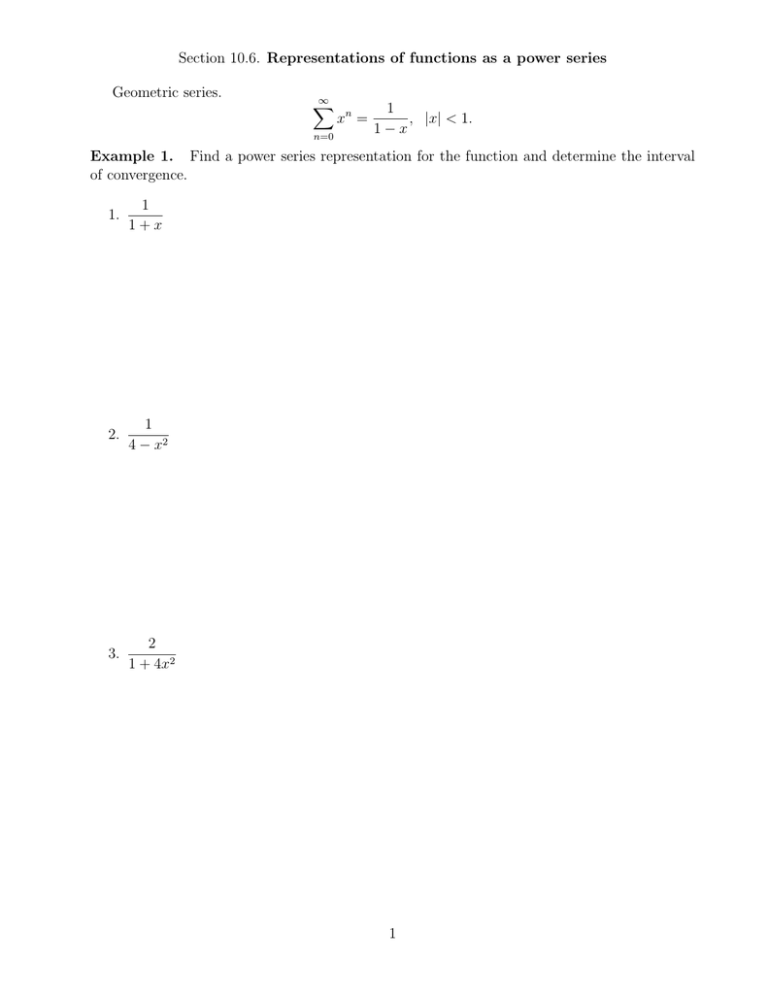
Section 10.6. Representations of functions as a power series Geometric series. ∞ ∑ n=0 xn = 1 , |x| < 1. 1−x Example 1. Find a power series representation for the function and determine the interval of convergence. 1. 1 1+x 2. 1 4 − x2 3. 2 1 + 4x2 1 4. 1 + x2 1 − x2 Term-by-term differentiation and integration. If the power series ∞ ∑ cn (x − a)n has n=0 radius of convergence R > 0, then the function f defined by f (x) = c0 + c1 (x − a) + c2 (x − a) + ... + cn (x − a) + ... = 2 n ∞ ∑ cn (x − a)n n=0 is differentiable (and therefore continuous) on the interval (a − R, a + R) and ′ f (x) = c1 + 2c2 (x − a) + ... + ncn (x − a) n−1 + ... = ∞ ∑ ncn (x − a)n−1 n=1 ∫ (x − a)2 (x − a)n+1 f (x)dx = C + c0 (x − a) + c1 + ... + cn + ... = 2 n+1 ∞ ∑ (x − a)n+1 C+ cn n+1 n=0 The radii of convergence of these series are R. This does not mean that the interval of convergence remains the same. Example 2. Find a power series representation for the function and determine the radius of convergence. 1. 1 (1 + x)2 2 2. ln(4 + x) Example 3. Evaluate an indefinite integral ∫ tan−1 (x2 ) dx as a power series. Example 4. Use a power series to approximate the integral ∫ 1/2 tan−1 (x2 ) dx 0 to six decimal places. 3
